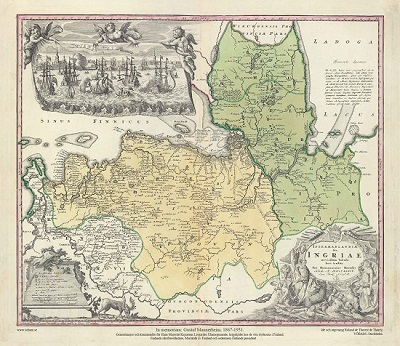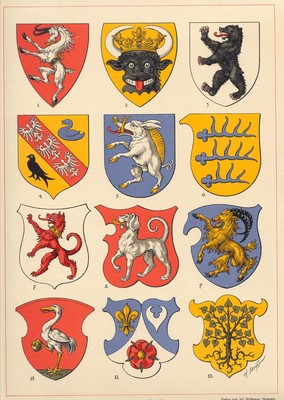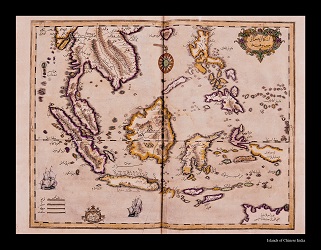Född 1679, död 11 februari 1754.
Son till kontraktsprosten och kyrkoherden i Rättvik Anders Tillaeus och Elisabet Dalborg. Petrus Tillaeus studerade vid Uppsala universitet 1699-1711 och blev sedan auskultant i Bergskollegium 1713.
'Stadsingenjör i Stockholm 1717, utnämndes han 1748 till rådman därstädes och afled d. 11 febru. 1754. Såsom stadsingenjör ådagalade han stor insiktsfullhet och inlade isynnerhet stor förtjänst genom utarbetandet af goda kartor. Väl bekant är den s. k. 'Tillaei karta', en General Charta öfver Stockholm med Malmarne, fullbordad 1731 i skalan 1:4000, och hvarå han på statsmyndigheternas hemställan erhöll kungligt privilegium för tio år. Kartan, den största som intill senaste tid utgifvits öfver Stockholm, trycktes 1733 med af staden försträckta penningar, och att den blef till belåtenhet framgår däraf, att staden 1750 såsom belöning för densamma tillerkände T. en summa af 2,000 dal. smt.' (Svenskt biografiskt handlexikon)
Bland arbeten.
Karta över Stockholm, efter P. Wallrave, 1733, utförd i samarbete med C. E. Bergquist och Erik Geringius, jämte porträtt av Fredrik I, efter M. Mijtens, kpst.
'Kartan - den intill senaste tid största väggkarta, som utgetts över Stockholm - är icke officiell i egentligaste mening, men hölls för ett 'autentiquet document', såsom överintendenten K. Hårleman kallade den i ett till K. M:t 1752 avgivet memorial. De tolv plåtarna, vilka ägdes av staden, översågs 1770 av P. G. Floding, som därvid tillät sig modernisera utseendet vid Riddarhustorget. Man kan således skilja mellan avdrag gjorda före och efter nämnda tidpunkt.'
Nordisk Familjebok, 2:a upplagan, band 29, Stockholm 1919.
Död i juni 1598.
Emery Molyneux was an English Elizabethan maker of globes, mathematical instruments and ordnance. His terrestrial and celestial globes, first published in 1592, were the first to be made in England and the first to be made by an Englishman.
Molyneux was known as a mathematician and maker of mathematical instruments such as compasses and hourglasses. He became acquainted with many prominent men of the day, including the writer Richard Hakluyt and the mathematicians Robert Hues and Edward Wright. He also knew the explorers Thomas Cavendish, Francis Drake, Walter Raleigh and John Davis. Davis probably introduced Molyneux to his own patron, the London merchant William Sanderson, who largely financed the construction of the globes. When completed, the globes were presented to Elizabeth I. Larger globes were acquired by royalty, noblemen and academic institutions, while smaller ones were purchased as practical navigation aids for sailors and students. The globes were the first to be made in such a way that they ...
Bland arbeten.
'The Globes Celestial and Terrestrial Set Forth in Plano'
Född 1714 27/2 i Stockholm (Maria), död 1790 19/5 i Stenkvista sn (Söd.).
Lantmätare. Kopparstickare och kartograf. Son av notarien i Södra förstadens kämnersrätt Johan B. och Maria Burgman. Student vid Uppsala universitet 1733. Avlade lantmäteriexamen 1742. Lantmätare i Stockholms län 1747-85. Var en tid aktör och har översatt dramer av Corneille och Molière.
Bland arbeten.
Karta över Drottningholm med utsikt av slottet.
Hultmark, 1944.
Ingermanlandiae – Homanns Erben 1734
Heraldischer Atlas, Tavla 5 - H. G. Ströhl 1899.
Biografiska uppgifter:Kâtip Çelebi, Mustafa bin Abdullah, Haji Khalifa or Kalfa, (1609, Istanbul – 1657 Istanbul)
Kâtip Celebi was an Ottoman scholar. A historian and geographer, he is regarded as one of the most productive authors of non-religious scientific literature in the 17th century Ottoman Empire. Among his best-known works is the Kashf al-?un?n ‘an as?m? al-kutub wa-al-fun?n, ('The Removal of Doubt from the Names of Books and the Arts'), a bibliographic encyclopaedia, written in Arabic, which lists more than 14,500 books in alphabetic order.
Life and works
The son of a soldier, he himself was a soldier for ten years until a heritage made him turn to a more contemplative life. As the accountant of the commissariat department of the Ottoman Army in Anatolia, he accompanied the Ottoman army in the campaign against Baghdad in 1625, was present at the siege of Erzurum, and returned to Istanbul in 1628. In the following year he was again in Baghdad and Hamadan, and in 1633-34 at Aleppo, whence he made the pilgrimage to Mecca (hence his title Hajji). The following year he was in Erivan and then returned to Constantinople. Here he obtained a post in the head office of the commissariat department, which afforded him time for study. He seems to have attended the lectures of great teachers up to the time of his death, and made a practice of visiting bookshops and noting the titles and contents of all books he found there.
One of his shorter and more accessible works is M?z?n al-?aqq f? ikhtiy?r al-a?aqq ('The balance of truth in the choice of the truest'), a collection of short essays on topics in Islamic law, ethics, and theology, in which he takes a relatively liberal and tolerant view—often critical of narrow-minded Islamic religious authorities. This book serves as a source on Ottoman social developments in the 16th and 17th centuries, such as the introduction of coffee and tobacco. While he did not concur with the outlawing of coffee and tobacco, he found tobacco smoke personally distasteful, writing of the 'noxious effects of the corruption of the aerial essence.' An English translation by G. L. Lewis of the M?z?n al-?aqq has been published with annotations under the title The Balance of Truth.
Katip Çelebi died suddenly and peacefully in October 1657, while drinking a cup of coffee.
Bland arbeten:
Cihannüma (The mirror of the world) Constantinople, Ibrahim Müteferrika, 1732. First edition.
This is the second work by Kâtip Celebi published in 1729. The author was a well known writer on history and geography and a bibliophile and in this work intended to publish a universal system of geography. In fact only part of the work (including the description of Asia Minor) was completed by Kâtip who used European and Arabic and Persian sources, and the whole was supplemented and edited by Ibrahim, who dedicated it to the grand vizir of Sultan Mahmud II, Ali Pasha.
The picture is showing the map of the Indian Ocean and the China Sea that was engraved in 1728 by the Hungarian-born Ottoman cartographer and publisher Ibrahim Müteferrika; it is one of a series that illustrated Katip Çelebi’s Cihannuma (Universal Geography), the first printed book of maps and drawings to appear in the Islamic world.
- Se bild.




